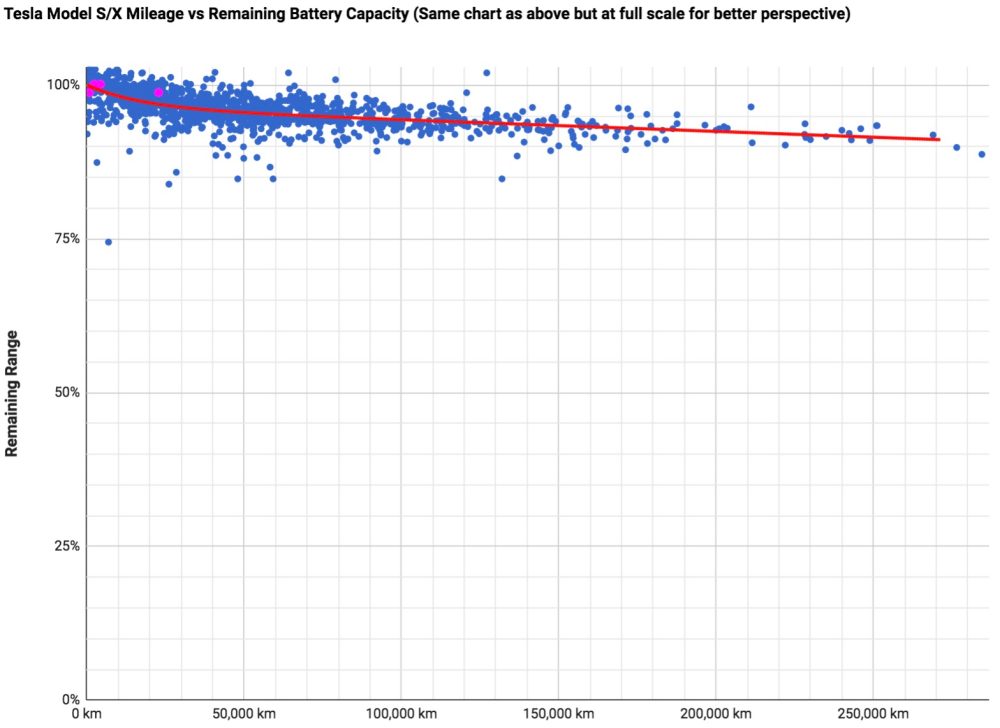|
NZ is kind of an interesting case because we just happen to have geography that makes hydro viable for the bulk of our power generation I think it's fair to say that hydro should be included in our menu of options globally, which should also consist of nuclear, wind, solar, and zero-point proton-shift technology
|
|
|
|
|

|
| # ? May 11, 2024 09:29 |
|
hell there's probably even a place in the global menu for gas, on the understanding that it's a backup system only and not to be used constantly, but who am i kidding, it will be used constantly
|
|
|
|
|
I mean, if we use fossil fuels under our “carbon budget” and don’t go over... sure? Replacing coal with natural gas is a good if not great thing assuming we then replace natural gas with a renewable in less than a decade but that is all theory and not reality.
|
|
|
|
I think pumped hydro must depend a lot of your local geography. SMUD was going to do a 400MW pumped storage project, but canceled it when the cost was going to be $1.45 billion. They can for now import more renewable power from the NW, and their overall analysis determined they'd only use half that additional power by 2030, so they essentially punted in hopes of newer technologies making storage cheaper in the future. In comparison, Duke built a 625MW combined cycle gas plant for $551MM, and the EIA lists average costs as even lower than that for a combined cycle plant. My local utility is repowering its gas plant but also added a Tesla (unfortunately) battery storage system. Supposed to be around $111MM for a 75MW/300MW-h battery system, so assuming you wanted 12hrs of storage at 400MW, you'd be at $1.776 billion. I imagine there is some kind of economy of scale that would make it cheaper though. 12 hours of storage may not be enough, I'm just going by what you'd currently need in California (time wise, not energy wise).  *edit* Re: fossil fuel use in the future, even the most moon shot scenario for the world that is at least somewhat realistic still sees more fossil fuel use than you'd expect, despite taking CO2 emissions down to 1975 levels. You don't need to worry about that though, because that's not going to happen. (from BP's Energy Outlook 2019) 
MomJeans420 fucked around with this message at 19:51 on Sep 27, 2019 |
|
|
|
Tab8715 posted:I mean, if we use fossil fuels under our “carbon budget” and don’t go over... sure? Theory versus reality is huge. Germany is a perfect example, where it's spent a decade pushing renewables towards 50% of it's generation, but it still emits more carbon than a decade ago.
|
|
|
|
I still think we're better off just vastly overbuilding renewables capacity and then using the overcapacity to generate liquid fuels that can run night-time electrical generation and vehicles. Whether that liquid is derived from extracting carbon from the atmosphere, or from cracking hydrogen, still seems like a better deal than trying to build giant battery farms or flood the Rockies. EDIT: don't get me wrong I'm also fine with ramping up nuclear power production
|
|
|
|
Plus extracting fuel from CO2 in the atmosphere is carbon neutral, though as of right now very energy intensive. But if you had a shitload of dirt cheap extra solar power with nowhere to go, may as well use it for that.
|
|
|
|
A problem with expanding hydro is that a lot of the places we could build. New dams are in the tropics, and would produce wide, shallow, warm reservoirs. Warm shallow water is also a perfect environment for methanogenesis, which undermines any carbon mitigation from fossil fuel substitution.
|
|
|
|
Killer-of-Lawyers posted:No. It doesn't work like that. The grids only interconnect at specific spots where they have equipment for that. Obviously this would require careful separation of anything feeding directly from the incoming AC power, even moreso than a facility with multiple services from a single grid, but that's why I mentioned datacenters. Their internal power distribution usually involves power getting converted to DC at some point in a UPS system, then either being converted back to AC or just delivered straight to devices as DC. I'm certainly not an expert on datacenter-scale power, but once it's been converted to DC to feed the UPS it seems to me like it shouldn't matter which grid it came from, right? I mean there isn't a datacenter in that area as far as I know so there are clearly some flaws in my very half baked idea, I'm just trying to understand whether the limitations are more technical or financial/political.
|
|
|
|
 Dams are pretty cool when you got em.
|
|
|
wolrah posted:I'm not saying interconnect, I'm saying one building located somewhere close to the corner where all three grids' territories meet. If you were willing to pay for the required transmission lines, could you get service from all three to a single facility? I don't think there would be any real reason stopping someone from doing what you're suggesting if such a location existed, I just really have to question why you'd bother. Diesel backups are a thing.
|
|
|
|
|
MomJeans420 posted:My local utility is repowering its gas plant but also added a Tesla (unfortunately) battery storage system. Why is this bad? MomJeans420 posted:
I'm a little lost here - are you just explaining that even in an ideal scenario that there will still be significant use of fossil fuels?
|
|
|
|
Battery storage isn't bad, but I would have preferred not going with a sketchy company who may or may not be around for warranty issues 5 or 10 years down the line. Re: ideal scenario, I was responding to your statement of having to replace natural gas within a decade. That chart is looking at worldwide energy usage, so while having any significant coal usage is not "ideal," that energy mix is incredibly optimistic and quite frankly not going to happen. The ideal mix would be incredibly cheap and safe storage with a minimal footprint, plus renewable to fill that storage. Barring some amazing breakthrough, that's not going to happen worldwide in the next few decades. Assuming you have a finite amount of money/resources to lower global CO2 emissions, subsidizing cheap LNG to India would probably be better than the money we'll spend to go from 50% renewable to 100% renewable (assuming places like California get there within their mandated time, which I'd bet they won't). However, that's not PC, hence people like Warren wanting to ban fracking despite the fact cheap LNG is the responsible for more of the US' decline in CO2 emissions than any other technology (coal to gas).
|
|
|
|
more nukes more nukes either peaceful or ottherwise, both will ultimately reduce global warming
|
|
|
|
|
Tab8715 posted:Why is this bad? Lithium ion batteries have a maximum lifespan of about 10 years and that is hopelessly optimistic for grid storage applications since lifespan is actually measured in charge/discharge cycles. The reality is these batteries have high energy density for use in cars but are completely inappropriate as a grid scale stationary energy stores. Companies who have invested in these batteries for electric vehicles sell these storage options to naive politicians. Lithium ion batteries as grid storage is pure grift.
|
|
|
|
Here's a really good breakdown of current energy storage methods https://www.eesi.org/papers/view/energy-storage-2019 quote:Energy Storage Today code:
|
|
|
|
I actually don't like tesla systems because the duty cycle and storage loss of lythium ion cells are bad. If your going to use batteries use ones engineered for the job and long life. even larger more robust lithium cells would be better and generate less waste. Rember that none of this is one and done, the batteries will have to be replaced, and in a 100% renewable situation they will be discharged nightly.
|
|
|
|
wolrah posted:I'm not saying interconnect, I'm saying one building located somewhere close to the corner where all three grids' territories meet. If you were willing to pay for the required transmission lines, could you get service from all three to a single facility? There are some pretty big technical issues with trying to do something like that. Each interconnection is going to have their frequency varying at different rates, along with other issues that means that you could not have any 2 (or even 3) interconnections tied to your equipment at the same time. That facility would act as a tie point, and power would try to flow through your equipment from one interconnection to another, most likely overloading your equipment the instant you closed both breakers. So you could only directly tie to one interconnection at a time, and would have to be fully disconnected from the first before tying into the second. In practical terms, that would mean you go dark before you can switch to a different source. If whatever you are trying to do is small enough that you can survive on a UPS for a couple of minutes, it will be much cheaper to have some fast start diesel generators at your location for backup power. If you really want to reduce the chance of losing power, you have a couple of different options with just about any utility. You can build in a spot that can easily be sourced from 2 different distribution substations. This gives you a pretty reliable redundant feed. Hint, this is what most utilities do for their operations control room (and have a backup diesel generator). If you have a high power requirement, you build your facility near existing transmission lines, and have the utility split one of the lines. Depend on how robustly you have your substation built, you will have two separate transmission line sources that should never go down for anything short of a tornado running right through your location. This option is expensive, and usually only used for really large scale factories, steel mills, and laboratories.
|
|
|
|
Lots of industrial customers accept lower rates (or have them imposed) as the price of being at the head of the line for load shedding to keep the grid up. It doesn’t matter if you have redundant connections if you’re deliberately disconnected to keep hospitals and residential customers on in an emergency.
|
|
|
|
Baronjutter posted:
Having Niagara Falls and nukes can also paint a pretty picture 
|
|
|
|
Orvin posted:There are some pretty big technical issues with trying to do something like that. Each interconnection is going to have their frequency varying at different rates, along with other issues that means that you could not have any 2 (or even 3) interconnections tied to your equipment at the same time. That facility would act as a tie point, and power would try to flow through your equipment from one interconnection to another, most likely overloading your equipment the instant you closed both breakers. So you could only directly tie to one interconnection at a time, and would have to be fully disconnected from the first before tying into the second. In practical terms, that would mean you go dark before you can switch to a different source. You misunderstood. In wolrah's scenario, you would convert each of the two incoming AC lines to DC before you combine them in any way. No two AC lines with differing voltages, frequencies, or phases would ever come in contact with each other.
|
|
|
|
There’s 84000 dams in the US and 80000 of them are not hydroelectric. Of those that are hydroelectric some would still exist if hydroelectric generation was not a thing. They might be designed or placed differently - but they would still be there because we would still want to control those rivers. Seasonal flooding is simply incompatible with modern human civilization even if it is natural and an ecological good. So if we’re going to build a big dam to stop a river from flooding towns and farmland we might as well stick a turbine in it. In fact, we ought to stick a turbine in all of them, even the dumb tiny ones because why not. Connect all that poo poo, use it as a big battery and call it the Dam Internet.
|
|
|
|
Farmer Crack-rear end posted:I still think we're better off just vastly overbuilding renewables capacity and then using the overcapacity to generate liquid fuels that can run night-time electrical generation and vehicles. Whether that liquid is derived from extracting carbon from the atmosphere, or from cracking hydrogen, still seems like a better deal than trying to build giant battery farms or flood the Rockies. iirc it's like an order of magnitude more expensive to do that than to just use batteries for night-time power, and it requires about as much infrastructure as huge battery farms but i'm definitely in favor of doing both and building out shitloads of extra production for all sorts of useful poo poo, including liquid fuel
|
|
|
|
you underestimate how little power some of these dams would produce, and only during some seasons. Theres a dam put on a lake along the lousiana border that generates power and it barely makes 50 mw if I recall. Turbines are not ecologically free. They require maintince crews, new construction, the usual fleet of vehicles a power station would need, and the copper and metal that needs to be mined to make them. Also its more ecologically damaging to put water through a turbine blade than a spillway when we're talking fish. And I don't know about other states, but most of our dams were not made to control flooding. We made them just to make lakes, of which we don't have many naturally.
|
|
|
|
Uh, how big of a pressure vessel would you need to store 1,000 MW of compressed air? That sounds mind boggling to me. OTOH, we are really, really good at making pressure vessels, so I could see farms of tanks attached to solar or wind farms definitely working. (I am already biased to this solution as my Brother in Law is a pressure vessel weld inspector in the oil industry. This sounds like a great way to transition all those workers into the green energy sector)
|
|
|
|
I actually think you can pump air in the ground where it displaces the aquifer, and then you use that to store energy.
|
|
|
|
SpaceCadetBob posted:Uh, how big of a pressure vessel would you need to store 1,000 MW of compressed air? That sounds mind boggling to me. Use fracking Wells
|
|
|
|
CombatInformatiker posted:You misunderstood. In wolrah's scenario, you would convert each of the two incoming AC lines to DC before you combine them in any way. No two AC lines with differing voltages, frequencies, or phases would ever come in contact with each other. Having 2 or 3 AC to DC converters for a single facility can’t be cheap. If they were economical, Texas would have a lot more ties to the Eastern interconnect.
|
|
|
|
MomJeans420 posted:Battery storage isn't bad, but I would have preferred not going with a sketchy company who may or may not be around for warranty issues 5 or 10 years down the line. How is that projection optimistic? I'm surprised that we're still using coal in the next few decades... That's interesting how LNG is reducing our carbon foot print and I've read how most (if not all?) of it is from fracking in the Permian Basin. I some ways I don't have an issue with this given that no one really lives their and it's just a desert. It's freaking crazy that in a way fossil fuel companies are now kind of the good guys? I suspect any banning of fracking would just really ban it from areas where there's sizable population along with way more regulations especially methane leaks. Fracking in Colorado and some of the East Coast States has been an absolute disaster. Energy companies should foot the bill and relocate anyone near a fracking site. If fracking was entirely done away with - I think that would just make demand for coal increase? Along with additional oil imports from the Middle East. Gucci Loafers fucked around with this message at 18:14 on Sep 28, 2019 |
|
|
|
Smiling Demon posted:Lithium ion batteries have a maximum lifespan of about 10 years and that is hopelessly optimistic for grid storage applications since lifespan is actually measured in charge/discharge cycles. The reality is these batteries have high energy density for use in cars but are completely inappropriate as a grid scale stationary energy stores. Companies who have invested in these batteries for electric vehicles sell these storage options to naive politicians. Lithium ion batteries as grid storage is pure grift. Batteries used for cars have an estimated 10 year lifespan because that's when the battery capacity is estimated to drop under 80%. While that's a deal breaker for an electric vehicle, 80% capacity is still quite functional for grid backups. We'll be seeing a lot of these storage facilities running on old vehicle batteries as we get more electric cars on the road.
|
|
|
|
Blorange posted:Batteries used for cars have an estimated 10 year lifespan because that's when the battery capacity is estimated to drop under 80%. While that's a deal breaker for an electric vehicle, 80% capacity is still quite functional for grid backups. We'll be seeing a lot of these storage facilities running on old vehicle batteries as we get more electric cars on the road. How are the older Nissan Leaf's holding up?
|
|
|
|
Tab8715 posted:How are the older Nissan Leaf's holding up? This project is making use of Leaf batteries: https://www.tdworld.com/electrification/power-reusing-electric-vehicle-batteries It's an emerging field, but there are enough old batteries lying around now that building battery banks out of used cells is becoming commercially viable.
|
|
|
|
Blorange posted:This project is making use of Leaf batteries: https://www.tdworld.com/electrification/power-reusing-electric-vehicle-batteries I was more so curious about the vehicles themselves than anything else but that's a positive use case.
|
|
|
|
Blorange posted:Batteries used for cars have an estimated 10 year lifespan because that's when the battery capacity is estimated to drop under 80%. While that's a deal breaker for an electric vehicle, 80% capacity is still quite functional for grid backups. We'll be seeing a lot of these storage facilities running on old vehicle batteries as we get more electric cars on the road. I think you are being absurdly optimistic in your projections here. 10 years was a very very high estimate, I doubt you'll being seeing much beyond the 3-5 range, particularly for Tesla. I really can't see storage facilities running on used car batteries given that such facilities would be hopelessly impractical with brand new batteries. Adding in parts of variable utility (and safety) is not going to make things better. If you wanted to make prognostications about battery storage some form of flow battery seems much more likely. Even then the numbers will come out very poor next to pumped hydro.
|
|
|
|
SpaceCadetBob posted:Uh, how big of a pressure vessel would you need to store 1,000 MW of compressed air? That sounds mind boggling to me. When I was in university for physics, I looked into compressed air energy store. Lots of losses from the heating of the gas during compression, but you do get 'free' AC when you run it thru the turbines.
|
|
|
|
Orvin posted:Having 2 or 3 AC to DC converters for a single facility can’t be cheap. If they were economical, Texas would have a lot more ties to the Eastern interconnect. Texas avoids interconnection to limit federal regulation. ERCOT is something of a mysterious foreign land to FERC. Apparatchik Magnet fucked around with this message at 00:13 on Sep 29, 2019 |
|
|
|
Smiling Demon posted:I think you are being absurdly optimistic in your projections here. 10 years was a very very high estimate, I doubt you'll being seeing much beyond the 3-5 range, particularly for Tesla. This is nuts. Hybrid vehicles have been on the road since the late 90s and lifetime for battery packs isn’t anywhere near as short as that. The Tesla Model S debuted 2012, 3-5 years is an absurdly pessimistic estimate that flies in the face of data. https://steinbuch.wordpress.com/2015/01/24/tesla-model-s-battery-degradation-data/
|
|
|
|
Smiling Demon posted:I think you are being absurdly optimistic in your projections here. 10 years was a very very high estimate, I doubt you'll being seeing much beyond the 3-5 range, particularly for Tesla. I really can't see storage facilities running on used car batteries given that such facilities would be hopelessly impractical with brand new batteries. Adding in parts of variable utility (and safety) is not going to make things better. Fascinating. Meanwhile: 
|
|
|
|
Losing only 10% range after 250000 km is pretty drat good and way better than I expected
|
|
|
|

|
| # ? May 11, 2024 09:29 |
|
Orvin posted:Having 2 or 3 AC to DC converters for a single facility can’t be cheap. If they were economical, Texas would have a lot more ties to the Eastern interconnect. It's my understanding that going from AC to DC is dirt cheap and easy, but going the other way isn't. I mean, you go from AC to DC all the time. Every LED for example does it.
|
|
|

































